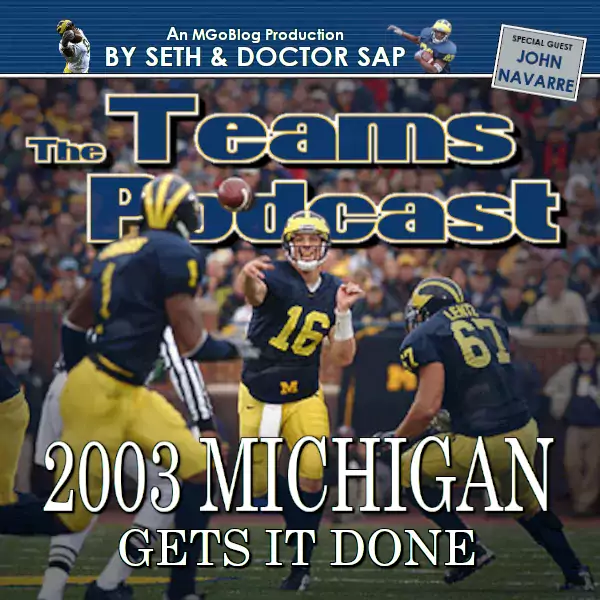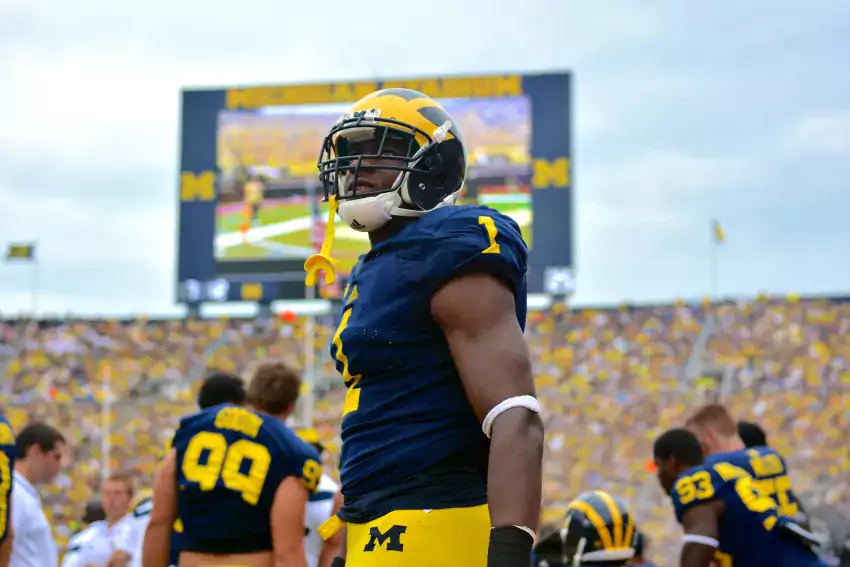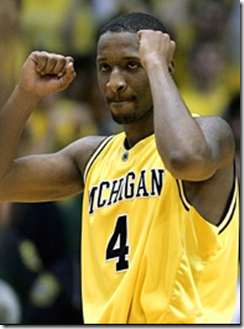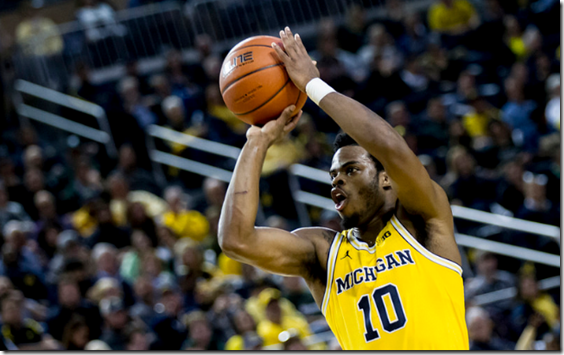chris perry


WITH SPECIAL GUEST JOHN NAVARRE
The Sponsor: If you're buying or reselling, talk to Matt Demorest at HomeSure Lending now and see if you can't lock in a low rate while it lasts. In addition to being more ethical, knowledgeable, hands-on, intelligent, and fun to work with, Matt's cool.
Previously: 1879, 1901, 1918, 1925, 1932, 1940, 1947, 1950, 1964, 1973, 1976, 1980, 1985 p.1& p.2, 1988, 1991, 1999, 2011 p.1 & p.2
[Writeup and player after THE JUMP]

HTTV Note: The books are done and we're going to have copies in hand by the end of the week. If you backed the kickstarter and want to skip waiting for the mail (which is going to take longer than usual this year), we have socially distanced pickup options at Cultivate in Ypsilanti this Saturday, at Five Shores Brewing in Beulah next Saturday, and after I drive a few boxes out there, at Bryan Fuller's wife's Cheese Lady franchise in Kalamazoo. If you want to get your books there email me and let me know. If your address has changed email me and let me know.
--------
Are we starting to get desperate for content? Sure. But also I noticed we talk a lot about 3-stars versus 5-stars, when Michigan's classes have historically been filled primarily with standard 4-stars. And by that I mean "just" 4-stars—not top-150 players, and not high 3-stars either. They're the kind of players who would headline a Michigan State class, whom Ohio State would take but not fight too hard for, the constant subjects of Notre Dame-Michigan-Penn State battles with a hometown favorite thrown in.
Previously: Pro Offense/Pro Defense, 1879-Before Bo, 5-Stars, 3-Stars, Extracurriculars, Position-Switchers, Highlights, Numbers Offense/Numbers Defense, In-State, Names, Small Guys, Big Guys, Freshmen
Rules: Lower bound: must be a four-star to at least one major ranker of his era, and average over 4.0 stars on the Seth scale. Upper bound: cannot be ranked top-100 by anybody or higher than a 4.3 on the Seth scale. Since 1990 because data go back that far. College performance considered only.
The Mike Hart Thing: Hart was the equivalent of a solid four-star to places that didn't create a lasting online database of the 2004 class, and a high 3-star to Rivals and Scout, who did, forever after immortalizing him as a "3-star" (this is a well-known malfunction of the human brain). Just giving you fair warning that your brain is going to rebel. Also "bucket list" wasn't in the lexicon until the 2007 film.
Quarterback: Tom Brady (1995)
Rankings:
| Nat Rec Advisor | Lemming | BlueChip Illustrated | Superprep | ☆s | Rkg |
|---|---|---|---|---|---|
| 5.7 (#10 PRO) | #6 PRO, #26 West (AA) | #6 QB West, All American | #65 Far West | 3.84 | #27 QB |
(Ranking is among Michigan recruits at his position, which has a sample roughly as large as an annual national class so I've included it. National Recruiting Advisor was proto-Rivals.)
This seems like an obvious answer but Brady really only narrowly won a competitive three-way competition with longtime starters who preceded him and proceeded him. That's a good summary of Tom Brady's Michigan career, which has been poured over by so many better journalists there's not a lot I can add to it.
The just-a-four-star rating is also representative of his recruitment. Brady had a few top schools after him as a #2 option behind some monster 5-star or close to it. He might have gone to USC if they didn't get their first two guys on the board, and Cade McNown committing to UCLA removed Michigan's main competition. Michigan waited until Florida won the battle for 5-star Bobby Sablehaus then pulled the trigger on Tom.
2nd Team: Todd Collins (1990)
The only data point I have on Todd is he was Tom Lemming's #8 Pro-Style QB. Well that and pick two guys out of these three:
| Player | Att | Comp | TD | Int | Cp% | Yds | Lng | YPA | Rtg |
|---|---|---|---|---|---|---|---|---|---|
| Player A | 1366 | 765 | 72 | 31 | 56% | 9254 | 77 | 6.77 | 125.8 |
| Player B | 711 | 443 | 35 | 19 | 62% | 5351 | 76 | 7.53 | 136.4 |
| Player C | 711 | 457 | 37 | 20 | 64% | 5858 | 90 | 8.24 | 145.0 |
Player B is Tom Brady. The guy with nearly identical college stats and vastly higher yards per attempt is the longtime starter who also had an extremely long NFL career. You also have to know that the two years of Collins starting were even more frustrating offensively than the Borges and DeBord offenses, and the Number 1 frustration was they weren't uncorking the passing game. Amani Toomer and Mecury Hayes were the Nico Collins and Ronnie Bell of the era, except when Michigan did deign to send them a pass Collins almost always put it on the money. Watching the semi-heralded Collins outperform Notre Dame golden boy Ron Powlus was one of the highlights of my young fandom.
The Field: Collins (4.24, 199), Scot Loeffler (4.20, 1993), Cade McNamara (4.12, 2019), Joe Milton (4.11, 2018), Nate Holdren (4.07, 1990), Alex Malzone (4.06, 2015), Spencer Brinton (4.05, 2001), John Navarre, who's Player A above (4.04, 1999)
[After THE JUMP: Guys who were dudes]
Suddenly it’s happening [Marc-Gregor Campredon]
The Question:
Ace:
Best/favorite/memorable senior-year breakout?
Brian: I surmise this is in honor of Derrick Walton?
Ace: Indeed.
Brian: We should point out that Walton's breakout is not merely a senior year breakout but the ultra-rare midseason senior-year breakout. After being called softbatch.
Ace: Yeah, I don’t really remember anything quite like what Walton has done over the last month, at least with Michigan basketball players.
Brian: I could kiss Maverick Morgan.
---------------------------------
The Responses:
Ace: The senior-year breakout that comes to mind for me hopefully won’t have too many parallels to Walton. When I was a senior in high school, my parents got me a ten-game ticket package for Michigan basketball that covered the conference portion of the schedule. This was 2005-06, when it looked like this could finally be the year that Tommy Amaker’s squad snapped the tourney drought.
 |
Senior Horton nearly got an Amaker team to the Dance. [MGoBlue.com via Holdin the Rope] |
Up to that point in his career, Daniel Horton had been an enigmatic player: obviously talented, usually the best player on some mediocre teams, but clearly hamstrung by the system and surrounding talent. His ORating never cracked 100 in his first three years at Michigan, and after a junior season cut short when he pled guilty to domestic violence, it looked like his promising freshman year may stand as his peak.
It all clicked in his senior year. Horton took a Walton-esque leap with his finishing around the rim, hit 39% of his threes, and played remarkably efficient ball for someone shouldering such a huge load (111.4 ORtg on a 28% usage rage). He had several notable performances, most of which came down the stretch: 32 points in a win at Minnesota, 23 and five assists in a win over MSU at Crisler, 21 and five in the home rematch against the Gophers, and a masterful 39-point game to beat Illinois and get Michigan to 8-6 in the Big Ten and on the precipice of a tourney bid. (Someone, please, get that game on YouTube. That was as loud as I’d ever heard Crisler until the Final Four squad.)
Horton’s heroics weren’t quite enough to propel Michigan into the tournament. The Wolverines went 2-7 down the stretch, with Dion Harris’ ankle injury against Ohio State wiping out much of Horton’s scoring support; Horton’s 34-point game against Indiana still wasn’t enough to get M the final win they would’ve needed to get a bid. They instead had to settle for a run to the NIT final. Horton’s magnificent play to close out his career, however, remains one of my fondest memories from a relatively dreadful era in Michigan hoops.
[Hit THE JUMP for Seth just rocketing off answers before anybody else can]

12